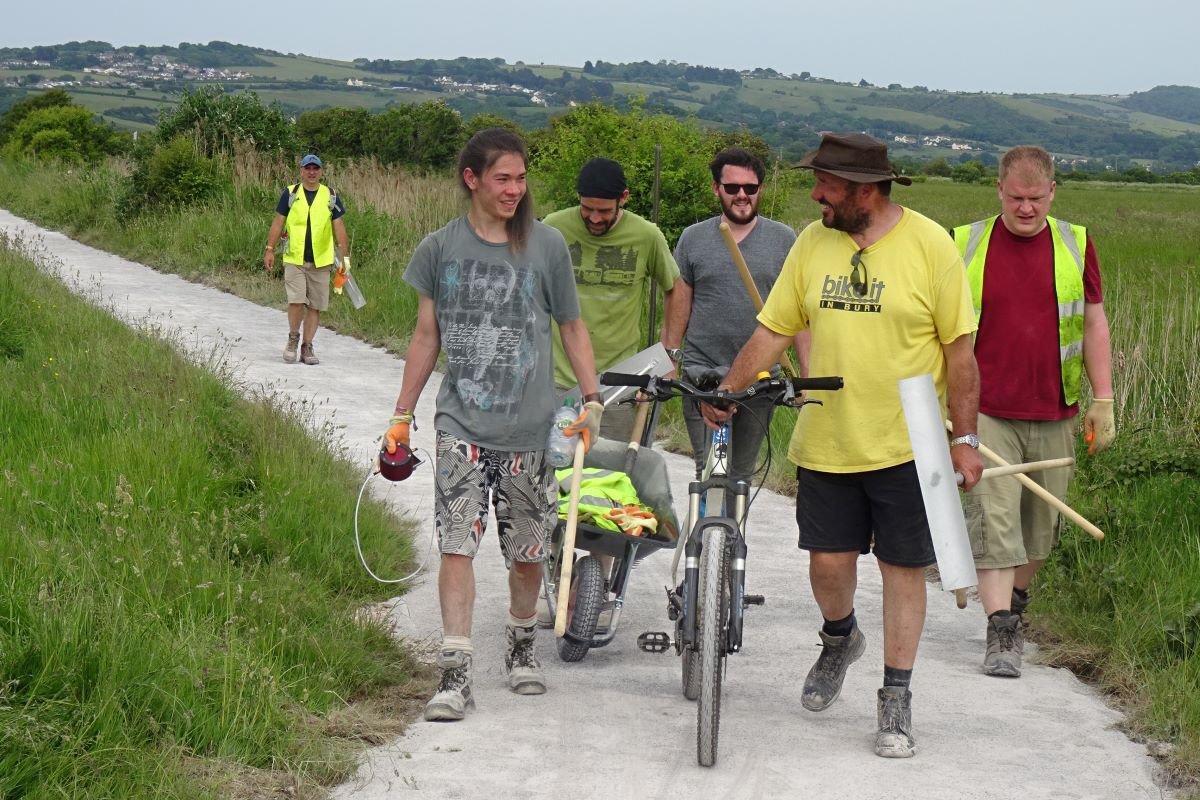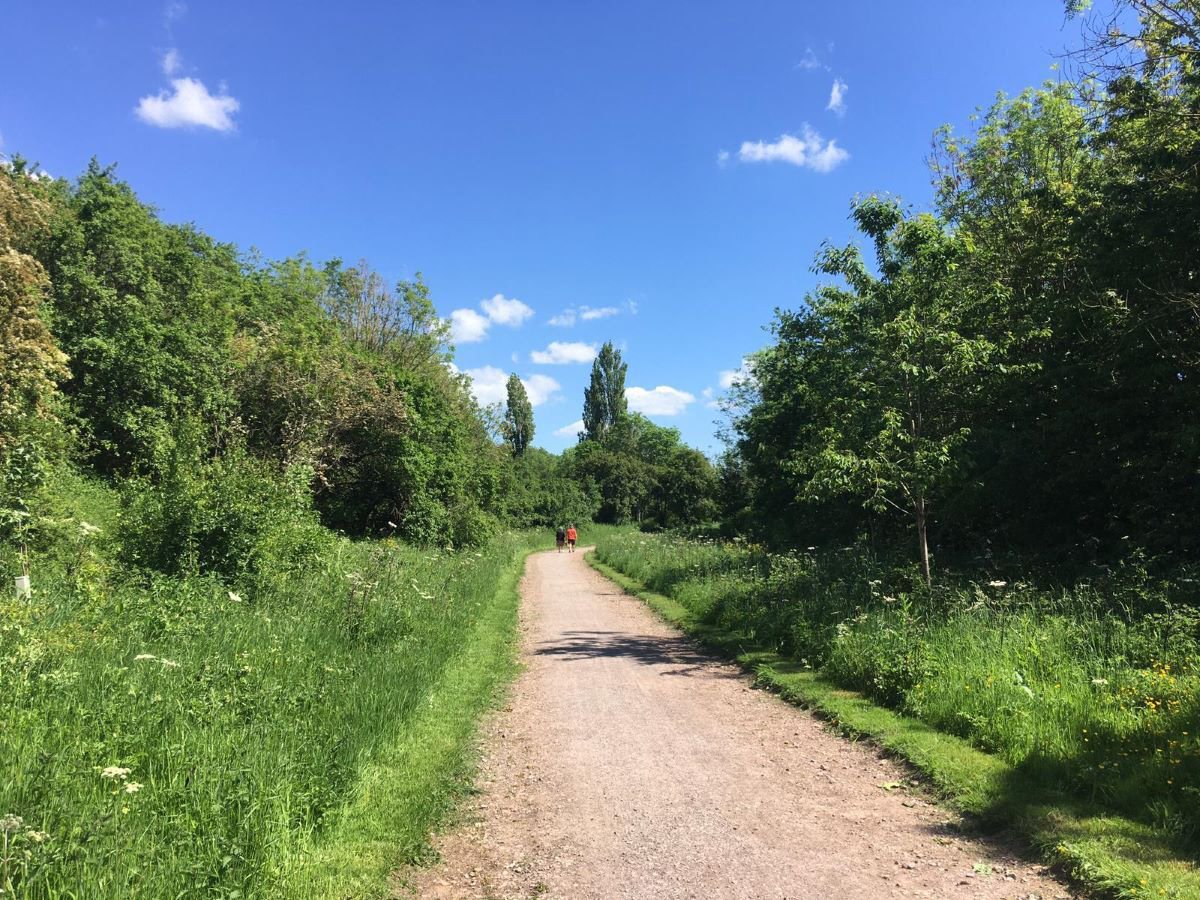
Slow progress on cycle-paths
One of the reasons that progress in developing a network of cycle-paths in England is glacially slow is that opposition turns up where you might reasonably have expected support. ‘Blocked by the Burdensome Estate’ set out how an agency sponsored by the Department for Transport is still undermining moves to create off-road paths by infilling or demolishing old railways structures. Campaigners in the Mendips are convinced that an even greater impediment locally is Somerset County Highways Department.
No progress in Somerset
Plans to develop multi-user paths in the Mendip area have focused around extending the existing Strawberry Line path to link Cheddar with Wells and beyond, using as far as possible the track bed of the former railway of the same name. The proposals link into ambitions for the Somerset Circle, a 76-mile traffic free circuit connecting Bristol, Bath, the Mendip Hills and the coast. While the local authorities in Bristol, North Somerset and Bath have been active in developing parts of the route in their area however, achievements where Somerset County Council (SCC) has responsibility are negligible. This has recently led the cycling charity ‘Greenways and Cycleroutes’ to advise its partners that unless SCC changes its approach “the Somerset Circle and all other routes in Somerset will become impossible to afford or deliver.”
The matter has been brought to a head by an impasse over a small extension to a cycle-path at Dulcote on the outskirts of Wells. It ought to be a ‘no-brainer.’ The proposed route links a major local employer with the existing cycle-path to Wells that passes below the A371. It crosses land already in public ownership with no conceivable alternative use – abandoned to scrub for some 20 years and used only by fly tippers and the occasional rough sleeper. There are no adjacent landowners who might object and the employer – Charlie Bigham’s – has agreed to contribute to the cost.
The extension would take vulnerable users off a heavily-used stretch of road and would form a link in the Somerset Circle. Moreover, it has the blessing of the local district council who have already granted planning permission and agreed to support the costs of construction. As veteran cycle-path designer and Greenways engineer John Grimshaw says “if such an opportunity had presented itself anywhere other than Somerset it would have already been built”.

Somerset County Council “have refused to engage”
Richard Jones, leader of the Strawberry Line East project at Dulcote, is more forthright. He describes the response of SCC to proposals the community group have developed with Greenways as “aloof” and “almost Kafkaesque”. Although Mendip District Council (MDC) gave planning permission for the path almost 12 months ago he maintains that “Highways have steadfastly refused to engage with the applicants, ignoring repeated requests for a meeting to discuss any requirements they might have and refusing to set out their expectations in writing”. When finally forced to provide a written response to plans submitted by Greenways they replied to MDC instead, and when asked to respond to the applicant, waited a further week to forward their response at 5.30pm on the Friday before the May Bank Holiday.
The response was terse. According to Richard Jones it simply “demanded a whole ream of expensive documentation, including a geotechnical study report – all under the pretence of wanting things done ‘properly’. Why”, he asks, “do Somerset need so much more technical detail than, say, Devon or Dorset, who have delivered miles and miles of beautiful, useful multi-user paths without the need for all this paperwork?”
Greenways, who have experience of constructing many such routes across the country echo his comments. “No other authority”, they state, “has sought even the level of documentation that has already been provided to Somerset”.
Disproportionate demands
There are other instances in Somerset, where apparently simple improvements have been stalled by county engineers. They quote in explanation the latest guidance on cycle infrastructure design prepared by the Department for Transport in July 2020 – LTN 1-20. This is an admirable document in many ways, seeking to move provision beyond the idea that simply painting a white line down the side of a main road constitutes a cycle-path. It should be clear however, even to a casual reader, that what is appropriate to a busy urban context cannot be a requirement for rural riders. In relation to issues like gradients or street lighting the document makes clear that the design standards are to be achieved ‘where possible’. How else could other local authorities have developed provision similar to that which campaigners seek for Mendip?
A casualty of the unitary conflict?
There are several possible explanations for the apparent obstructiveness of county officers. One is that this project has fallen foul of the toxic relationship between SCC and the four constituent district councils created by a perceived attempt to bulldoze through a single unitary authority. In the current degraded political environment, where project funding seems aligned to party politics rather than people’s needs, it is easy to imagine that a Conservative county is happy to put the brakes on progress in a Liberal Democrat controlled district.
Lack of ambition and risk aversion
Others counter however that the lack of support for rural infrastructure in Somerset is not new. Years of austerity in a near bankrupt county appear to have led to a desperate aversion to risk and a lack of ambition across most departments. SCC seems much more focussed on avoiding commitments and liabilities than on providing services for its citizens.
It is also the case that enthusiasm for outsourcing has left departments short of skilled and experienced staff. Seeking the security of textbook rather than pragmatic approaches to design issues may reflect that inexperience.
The Hinkley ‘dividend’
The most charitable explanation for what campaigners see as unreasonable expectations is that Somerset highway engineers have been spoilt by the largesse that has accompanied the construction of Hinkley Point nuclear power station. Generous funding for communities near the site has enabled SCC to insist on gold-plated standards for new paths without having to dip into its own coffers to meet the cost. It is a classic case of power without responsibility.
“Just get out of the way”
Five years ago, Somerset County Council agreed unanimously to endorse the Strawberry Line project. Since then, not a centimetre of the path has been built and SCC appears to have no plans to develop any of it in the future. Richard Jones says that campaigners have given up any expectation that the county council will offer practical support to the project; “but it would be nice if they just got out of the way”.




